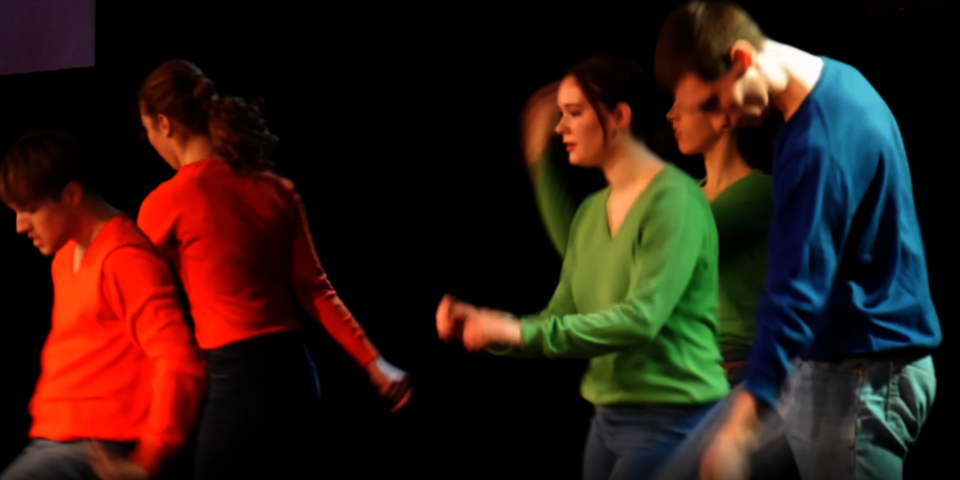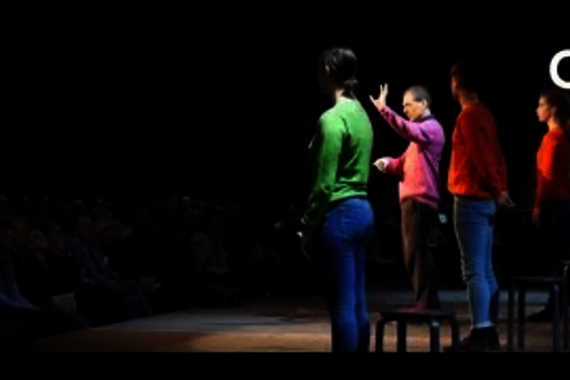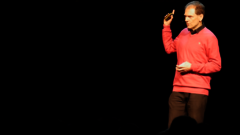Lehmer's theorem on the move
To express a mathematical theorem in a dance is not an easy job. Yet choreographer Roos van Berkel and Tom Verhoeff, university lecturer at M&CS and lover of modern dance, did so in honor of the 25th anniversary of the National Mathematics Days (abbreviated in Dutch as NWD). The result, Lehmer's Dance, was performed at Conference Center Koningshof in Veldhoven last weekend and Cursor was there as well.
The visitors of the NWD, math teachers who teach pupils from 12 to 18 years of every school type, were given a very special lecture performance on Saturday. Lehmer's Dance, with the length of a lesson, is an unusual combination of mathematics and dance.
Read on below the video.
The dance is about Derrick Lehmer’s mathematical suspicion that Tom Verhoeff (TU/e department of Mathematics and Computer Science) tries to prove, and in 2015 partly proved. Choreographer Roos van Berkel: "In essence, it is about objects that can and cannot be distinguished from each other and change places according to a few specific rules. 'Lehmer's Dance' is a live performance in which we elaborate these mathematical rules in image, movement, and sound". TU/e students might have already seen Van Berkel dance on campus at the Studium Generale project Odyssee or with an interactive lighting installation from Industrial Design.
Bring math to life
Van Berkel focuses on the intersection where dance, science and technology meet. "The request to make a choreography for the 25th anniversary of the National Mathematics Days of course suited me very well, but it also required a team to organize everything, and among other things and people, a business manager and a production manager. I took quite a lot on my plate." But bringing together a scenographer, composer and six dancers enabled Van Berkel to bring Lehmer's theorem to life in a variety of ways for an audience of 750 people.
Tom Verhoeff came up with the idea when he saw a row of participants on stage during the opening ceremony of International Mathematical Olympiad in Germany in 2009. "Permuting a row of people is almost a dance already. As I looked into it further, it seemed natural to me that showing only 'dry' permutations isn’t that attractive to watch, and that a choreographer could possibly make something more enjoyable. I love dance a lot and here I saw an opportunity to popularize math."
Elementary mathematics
Although the proof of Lehmer’s Conjecture can be understood without much prior knowledge, it is hardly discussed at secondary schools. Verhoeff: "The kind of mathematics that has to do with this suspicion of Lehmer is usually only taught to math students at university. Too bad, because it just is so elementary - and beautiful."
How the visitors saw the mathematics reflected in the dance is more difficult to explain. "Roos has been inspired in various ways by the visualizations I made of the theorem. Some things will immediately be recognizable, but others will not. Compare it with the music of Bach. There is also more structure in that than you hear as a layman, such as a motif that is also played backwards or upside down, or both", says Verhoeff.
But Van Berkel can explain the following: "The rules of Lehmer's thesis clearly state what needs to be done, but of course do not say anything about how this can be done. You can apply the changes to people, as well as to objects and tones. And then you’re also completely free to fill in how this can happen. Nothing is determined about properties such as direction, distance and time. Creating and executing the choreographic rules within the mathematical rules is a big playground because of the combination of precision and freedom."
Lehmer's Dance will be performed a second time in Veldhoven at the Dutch Mathematical Congress in April.




Discussion